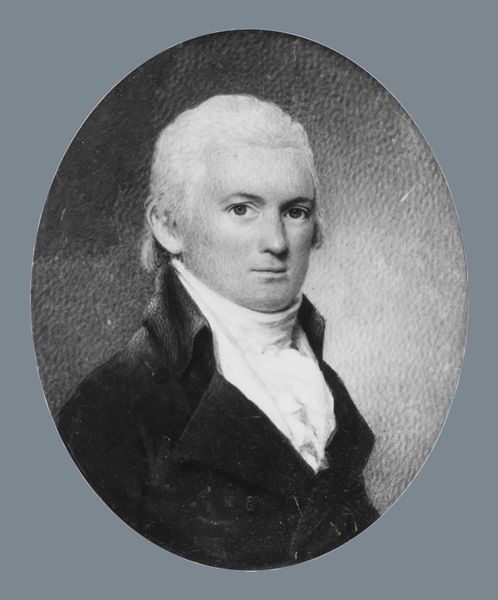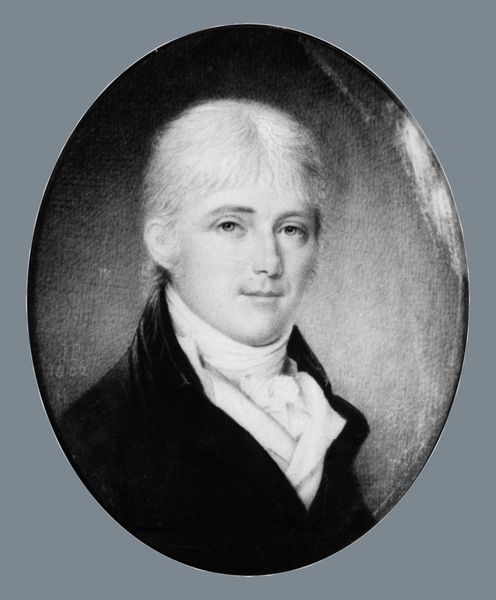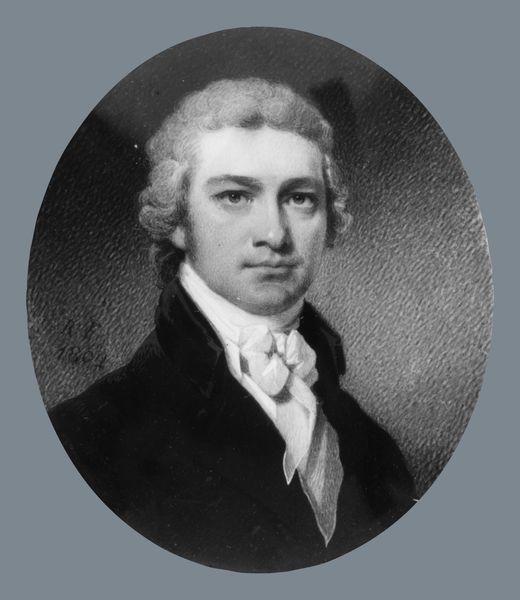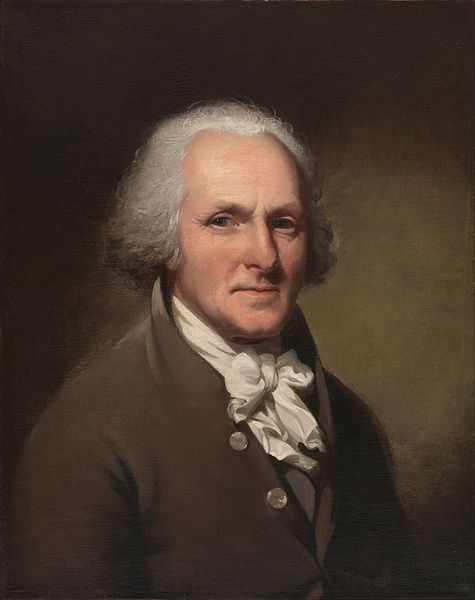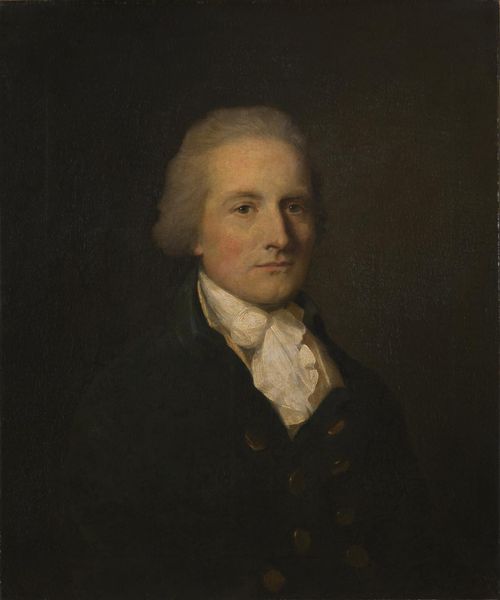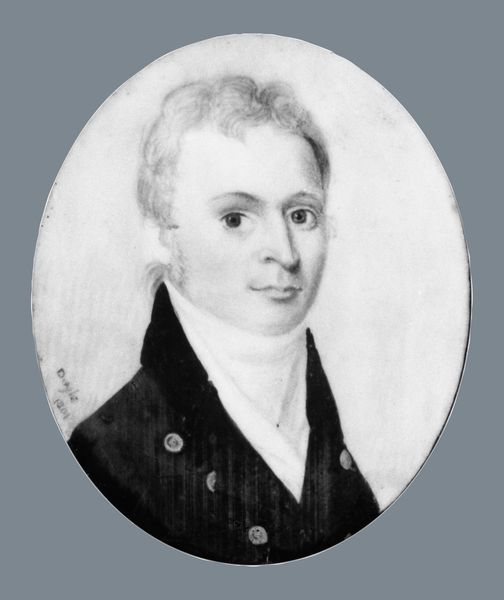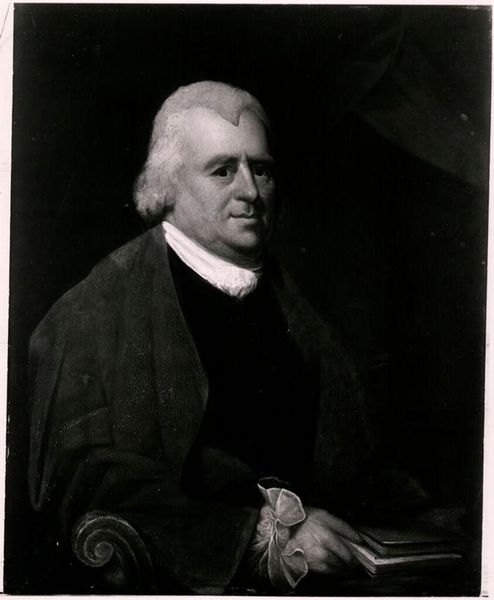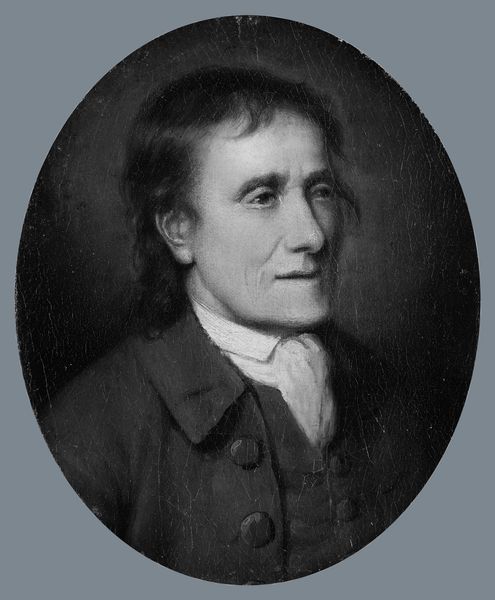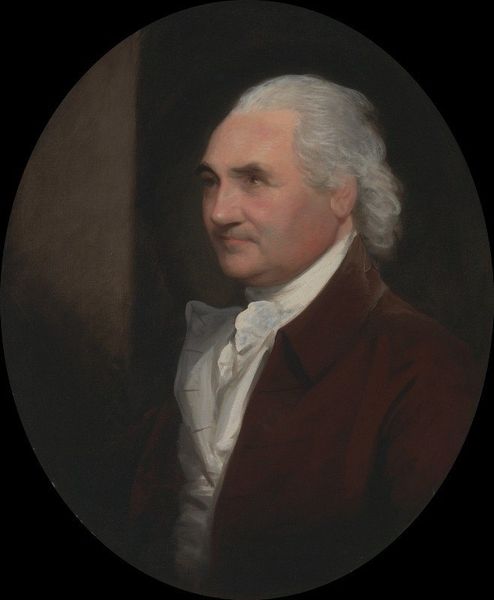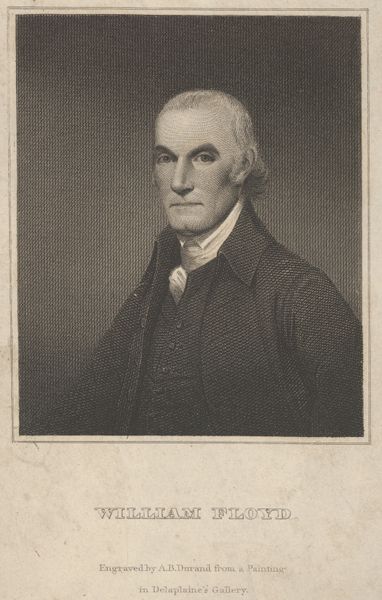
drawing, pencil
#
portrait
#
drawing
#
neoclacissism
#
portrait
#
pencil
#
history-painting
#
realism
Dimensions: Sight: 2 15/16 x 2 5/16 in. (7.5 x 5.9 cm)
Copyright: Public Domain
Curator: Before us is "Portrait of a Gentleman," a pencil drawing from 1804, crafted by William M. S. Doyle. It now resides at the Metropolitan Museum of Art. Editor: It strikes me as austere. The stark black and white contrasts contribute to a somewhat somber, almost imposing, mood. Curator: Considering its historical context, the portrait reflects the rise of Neoclassicism, emphasizing rationalism and order. We see the gentleman depicted with a certain restraint, characteristic of the period's ideals of masculinity and social standing. Editor: I notice the almost clinical precision in the rendering of his features. The oval format echoes antique cameos. His gaze is direct, seemingly meant to convey trustworthiness or intellectual capacity, which were obviously valued attributes. Curator: Absolutely. His attire—the high collar and dark coat—further reinforces his position within the societal hierarchy. It speaks of wealth, sobriety, and control, reflecting the politics and prevailing values of his era. His image becomes part of the narrative of power. Editor: The stark contrast and simple medium used—pencil—also evokes a sense of intellectual purity. Perhaps there's an intended allusion to ancient philosophical portraits where intellect and status converged. He becomes an emblem. Curator: It's fascinating how even in a seemingly simple portrait, so much cultural coding is subtly yet powerfully communicated. Understanding the visual language allows us a glimpse into the gentleman's role within the grander sociopolitical tapestry. Editor: The enduring nature of this style also underlines that certain symbols of power and intellect transcend their original contexts. The gentleman becomes an icon. Seeing such echoes of these symbols used in very different modern contexts allows us a different reading today. Curator: Ultimately, exploring "Portrait of a Gentleman" allows us to think about the complex relationships between portraiture, identity, and societal frameworks. The piece isn't merely a picture; it is a window onto a world. Editor: And an entry point into exploring what values societies then held important to visualize and emulate. It truly makes one wonder about our own contemporary visual legacy.
Comments
No comments
Be the first to comment and join the conversation on the ultimate creative platform.
